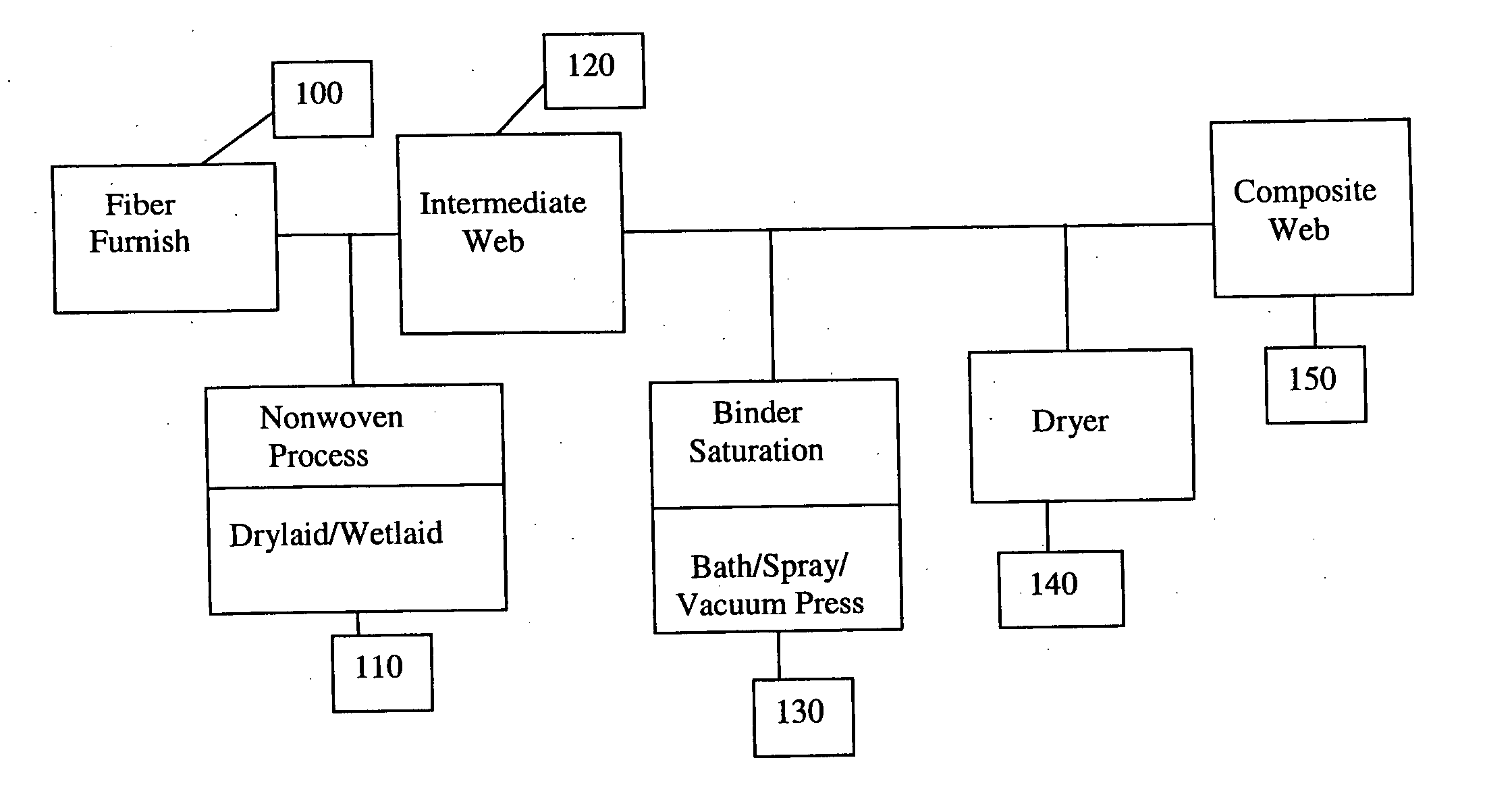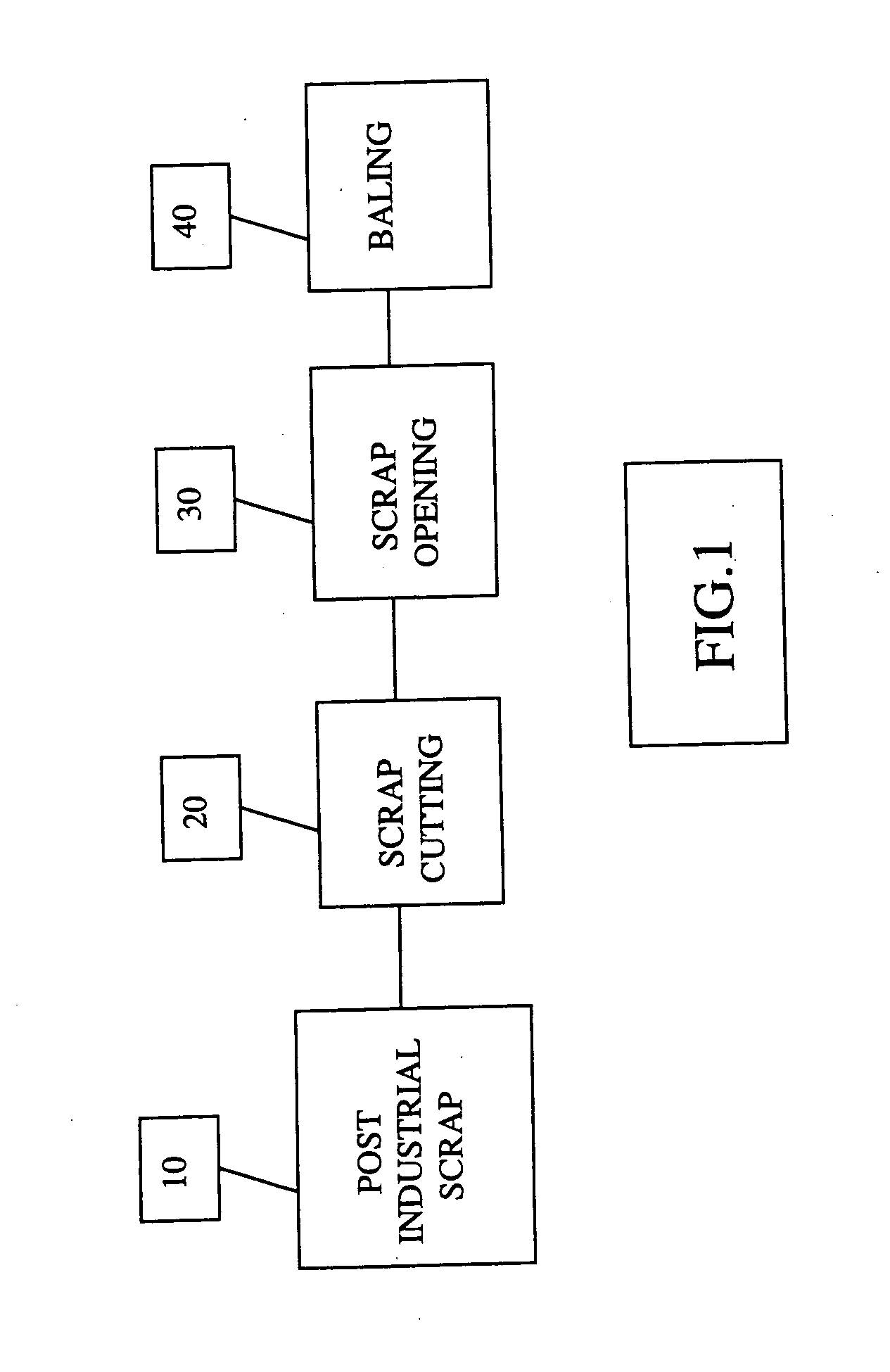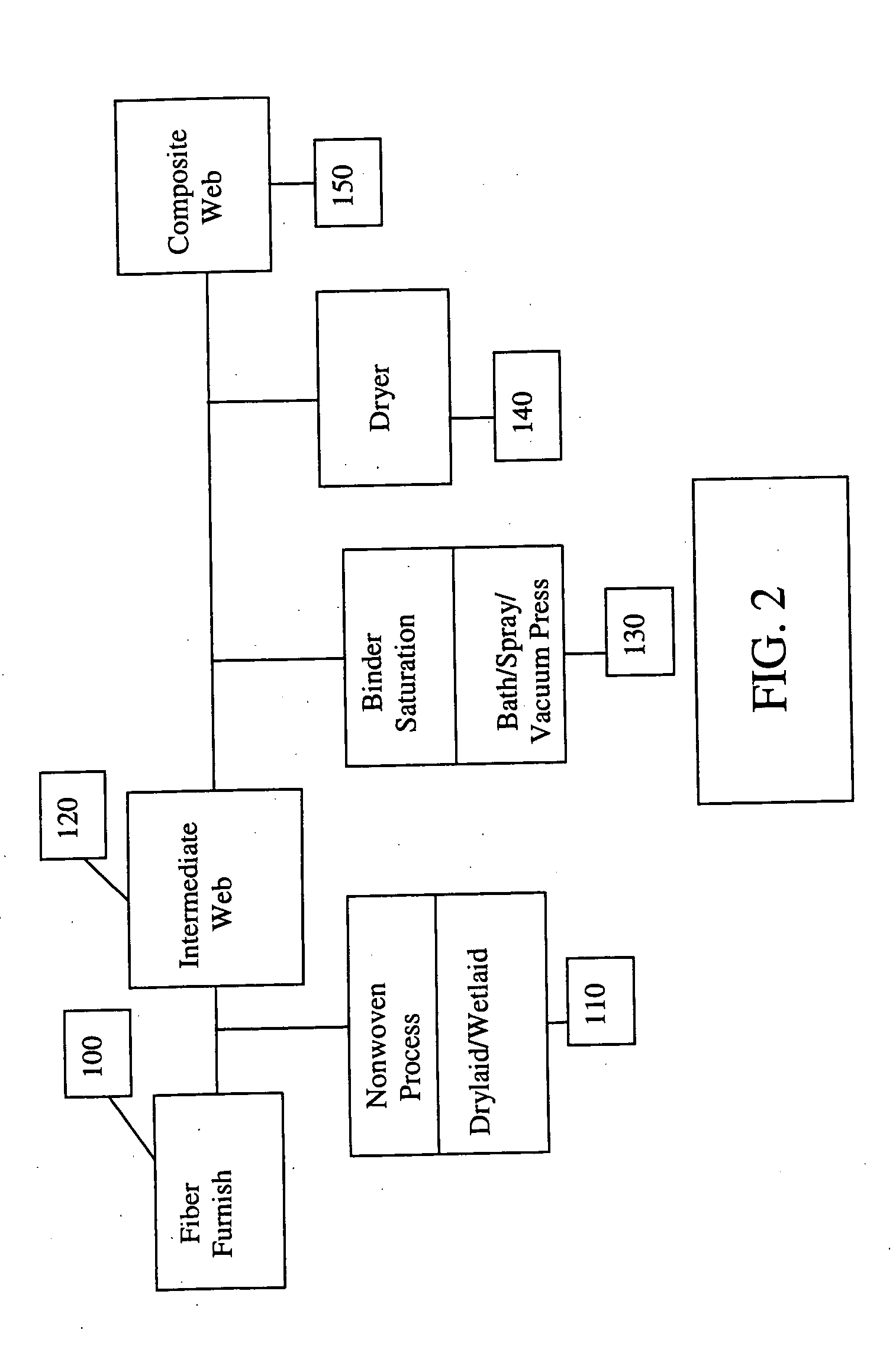Composite web and process for manufacture from post-industrial scrap
a technology of composite webs and post-industrial scrap, which is applied in the field of composite webs and process for manufacturing from post-industrial scrap, can solve the problems of coarse exterior surfaces of reclaimed post-industrial fibers and jagged ends
- Summary
- Abstract
- Description
- Claims
- Application Information
AI Technical Summary
Benefits of technology
Problems solved by technology
Method used
Image
Examples
example 1
[0147] A composite web was formed by the process of the present invention by obtaining cut and opened scrap fiber component and cellulosic component fibers. The scrap fiber component included a blend of 50% natural fibers, 30% high melting point synthetic fibers, and 20% low melting point synthetic fibers. The cellulosic component included cut and opened cotton fibers and was refined using a disk refiner equipped with bars in a water solution to approximately 300° CSF. After the cellulosic component was refined, the scrap fiber component was added to form a fiber furnish. The fiber furnish was refined to approximately 600° CSF. A 2% polyvinyl alcohol solution was added to the fiber furnish to assist dispersion and a 2% surfactant solution was also added. The fiber furnish was delivered to the wire of a fourdrinier machine where a basis weight intermediate web of approximately 900 lb. / 3000 ft.2 was formed. The intermediate web was then pressed in a wet calendar nip to approximately 5...
PUM
| Property | Measurement | Unit |
|---|---|---|
| length | aaaaa | aaaaa |
| length | aaaaa | aaaaa |
| weight | aaaaa | aaaaa |
Abstract
Description
Claims
Application Information
 Login to View More
Login to View More - R&D
- Intellectual Property
- Life Sciences
- Materials
- Tech Scout
- Unparalleled Data Quality
- Higher Quality Content
- 60% Fewer Hallucinations
Browse by: Latest US Patents, China's latest patents, Technical Efficacy Thesaurus, Application Domain, Technology Topic, Popular Technical Reports.
© 2025 PatSnap. All rights reserved.Legal|Privacy policy|Modern Slavery Act Transparency Statement|Sitemap|About US| Contact US: help@patsnap.com



